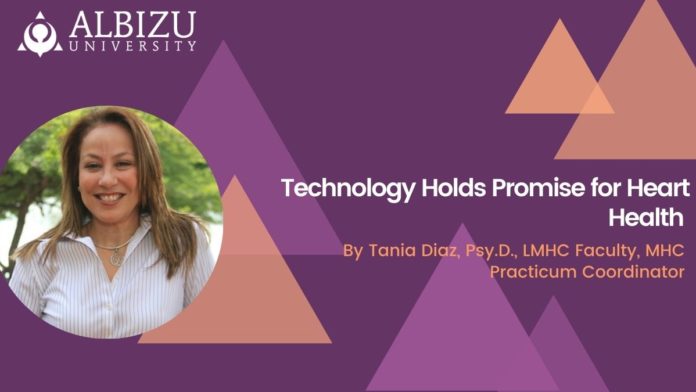March 22 2021 – While technology has always been an integral part of modern society, its usefulness has certainly seen an exponential boom since the onset of the COVID-19 pandemic. It is scary to imagine what it would have been like for teachers, therapists, and school age children to navigate the year-long pandemic without using tablets and smartphones as academic tools. As technology becomes more fluid in today’s culture, it is natural to combine its use with traditional behavioral and physical health services to create higher degrees of resilience during these tough times.
COVID-19 restrictions have placed a huge burden on all of us, particularly for individuals with existing psychological conditions such as depression, anxiety and/or physical conditions like hypertension and cardiovascular diseases. Studies show that cardiovascular disease is the leading cause of premature deaths globally, imposing extraordinary health and economic burdens worldwide. Approximately 610,000 people die of heart disease in the United States every year, accounting for one in every four deaths before the age of 70. Also, high blood pressure or hypertension is considered to be one of the leading public health concerns and a major risk factor for heart attacks, strokes, kidney disease, and cardiovascular disease, among other concerns.
While there are multiple factors that contribute to such health concerns, high blood pressure appears to be a staple in most health-related illnesses. According to the American Heart Association’s newest guidelines, almost 46% of the adult population in the United States will be diagnosed as having high blood pressure, with the greatest impact expected among men and women under 45.
In response to the global pandemic, the American Heart Association encourages preventative strategies designed to promote a healthy diet, exercising, appropriate medicine intake, and the use of basic health technologies to help reduce such risks.
To begin, it is important to first know how the heart functions. The heart and brain communicate with each other, constantly exchanging information in the form of rhythmic or non-rhythmic patterns. When you’re afraid or anxious, your heart rate produces a non-rhythmic pattern and sends a message to your brain telling it “I am afraid, anxious, or in danger.” Hence, non-rhythmic patterns are associated with negative emotional states such as depression, anxiety, confusion and poor concentration.
Rhythmic patterns are associated with positive emotional states, such as feelings of happiness, improved concentration, and planning, which leads to greater stress management, resilience, coherence, and optimal functioning. Therefore, the goal is to create rhythmic communication patterns through the use of positive, emotion-focused techniques. This method allows heart-brain communication by teaching you how to use your breath to increase your heart rhythm coherence, which is key to your heart’s health.
The use of a heart-rate monitoring system device, which measures heart rate variability by attaching a pulse sensor to an earlobe or finger, is also very helpful. This mechanism uses technology that allows your blood pressure to be measured through your skin. It is a reliable and valid method of acquiring, quantifying, and tracking heart rate variability from a deep breathing protocol. A visual breath-pacer can also be used to promote regularity of the breathing. It involves breathing deeply without straining while simultaneously invoking a positive emotional state.
Activating a positive emotional state will decrease blood pressure, which is a precursor for many physical ailments. It is a prime example of the benefits of learning how to self-regulate our emotions. Utilizing simple self-regulating tools makes it possible for individuals, health professionals and organizations to improve health, well-being, performance and productivity. The available technology has been utilized worldwide in diverse settings, from universities that help students manage test anxiety to increasing resilience and reducing stress among special weapons and tactics [SWAT] officers. Technology continues to hold great promise for improving emotional stability, and overall physical health and social wellbeing, particularly during challenging times.
Dr. Tania Diaz is a licensed psychologist, qualified board-approved clinical supervisor for mental health counselors, and Heart-Math Certified Trainer. She currently serves as the Program Coordinator for Mental Health Counseling students at Albizu University, where she teaches graduate courses and supervises student clinicians, and owns her boutique private practice in Miami Lakes. With over 20 years of clinical experience in the mental health field, she was recently honored with membership in the Trademark Top Doctors of America in 2018.
For the full article: https://southfloridahospitalnews.com/page/Technology_Holds_Promise_for_Heart_Health_/17660/25/






